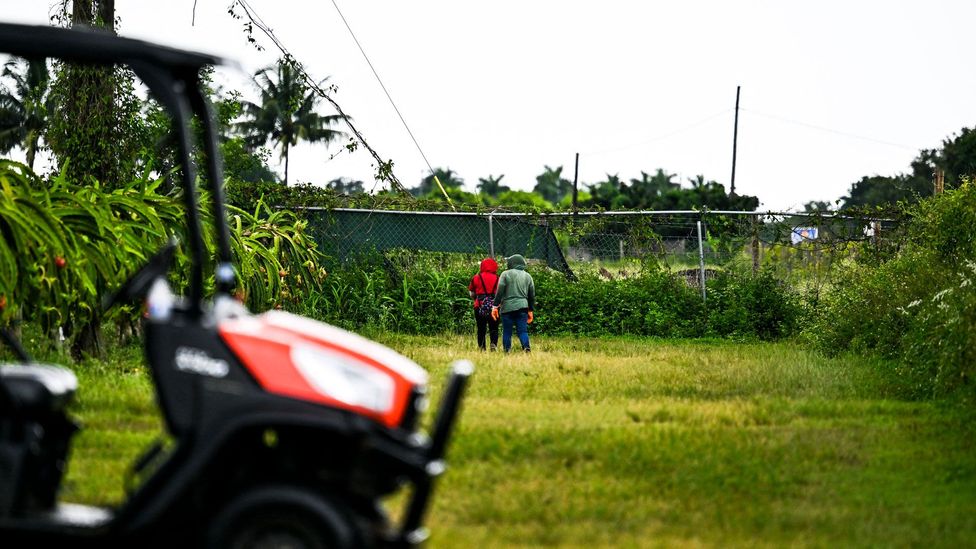Earlier this month, the World Meteorological Organization recorded the hottest week on record. The scorching temperatures have not abated as heat waves continue in Europe, North America, Asia, North Africa and more.
As the planet warms, people are getting “stuck” in persistent weather patterns for longer durations, says John P Abraham, a professor of thermal sciences at the University of St Thomas School of Engineering, US. “What used to be a 1-to-2-day heat wave is now 3-to-5 days. People who can handle a day or two of excess heat will have many more problems with longer durations,” he says.
As scientists predict ongoing climate change will continue push up temperatures and normalise heat waves, the way people live is changing. So is the way people work. Workers need to know what could be coming down the road for them – and companies also need to rise to the occasion to protect them.
Working indoors and out
Workplace changes will generally be divided into two categories, say experts.
The first is outdoor and non-cooled environments – such as agriculture or manufacturing – in which high temperatures are not controlled. In 2022 a Madrid street-sweeper died from heat stroke after working in extreme temperatures. Accordingly, academics say some of the biggest changes will likely happen in these types of work environments, to protect workers.
“Working outdoors in the heat will require shorter shifts with more breaks, and more overnight work,” says Abraham.
However, even though it’s likely this group of workers will see their hours shift to later in the evening, this approach isn’t a cure-all, and still poses risks. First, he says, night-time temperatures are warming faster than daytime ones. “If workers are in daytime heat at work but night temperatures are sufficiently hot that their body cannot cool, they will have a much harder time the next day,” he explains. Other safety issues, such as visibility, could pose problems, too.
For workers in non-temperature-controlled environments, air-conditioned cooling centres and frequent breaks to regulate body temperature may become common (Credit: Getty Images)
For workers in non-temperature-controlled environments, Abraham believes air-conditioned cooling centres will become more commonplace, and employers will have to build in breaks for workers to bring down their body temperatures enough to work again.
Employees who work indoors or in cooled environments may be comparatively safer from exposure to extreme temperatures, but they also should expect changes to their work routines.
“Contemporary work arrangements like remote work, hybrid work, four-day weeks … and six hours a day working days in a week instead of 8 hours are proving to be helpful in heat wave situations,” says Mansoor Soomro, a senior lecturer in sustainability and international business, leadership, management and human resources at Teesside University International Business School, UK. “This cuts down on commuting, which can further drain employees’ energy. Employees can also feel more comfortable in the heat at home thanks to dressing informally.”
Across both environments, some workers are already shifting their schedules to begin earlier and end before temperatures peak midday – something Soomro predicts we are likely to see more of.
The role of employers
Employers may also introduce new measures for workers.
Soomro says some employers are conducting periodic heat-risk assessments to identify some of the groups most vulnerable to spiking temperatures, including the aging workforce, pregnant people and employees with disabilities. “These people can then be given allowances and additional leverages when they need it,” he says. He expects more employers will begin to carry out these checks as extreme heat persists.
Similarly, he predicts companies will increasingly implement specific heat-related health and wellbeing initiatives. These may include training workshops on heat-stress management or fitness and nutrition plans to help workers adapt to the changing climate.
Infrastructure investment will also be key. “Companies are investing in creating heat-resistant working environments which includes sustainable building infrastructure with better air conditioning system,” says Soomro.

Research shows that countries not used to dealing with high temperatures will have the most immediate need for new infrastructure to support office workers (Credit: Getty Images)
Changing the workday in response to climate change also makes good business sense for leaders.
“Heat-related discomfort adversely affects job performance and productivity,” says Soomro. Similarly, companies want to avoid the fallout of heat-related health conditions at much as possible. “For employees, they suffer being sick, losing work days and pay and their family life can be affected. For employers, they suffer the consequences of medical treatment, lost productivity, and legal disputes.”
Although the burden is on some companies to protect workers, Abraham and Soomro agree legislation must play a part – and quickly.
The good news is some governments are already putting into place laws addressing work in the age of rising temperatures. Following the country’s hottest April on record, Spain announced new laws for both businesses owners and workers. Alongside financial support for companies impacted by droughts, the new legislation states that when the weather conditions reach orange (significant risk) or red (extreme risk), it will be mandatory for employers to adapt working conditions, including the reduction or modification of the hours of the scheduled workday.
Despite the urgency, some research indicates that most countries are very unprepared to respond quickly, however.
A July 2023 report from University of Oxford highlighted an “unprecedented surge in cooling demand”. Their research indicated that the energy required for cooling by 2050 is predicted to be equivalent to the combined electricity capacity of the United States, European Union and Japan in 2016. The research also shows locations unaccustomed to extreme hot weather were the most unprepared with the analysis – the most affected countries include Ireland, the UK and Finland.
Climate change – and the subsequent future of work – is uncertain, but experts say warming weather will undoubtedly shake up work as we know it.
